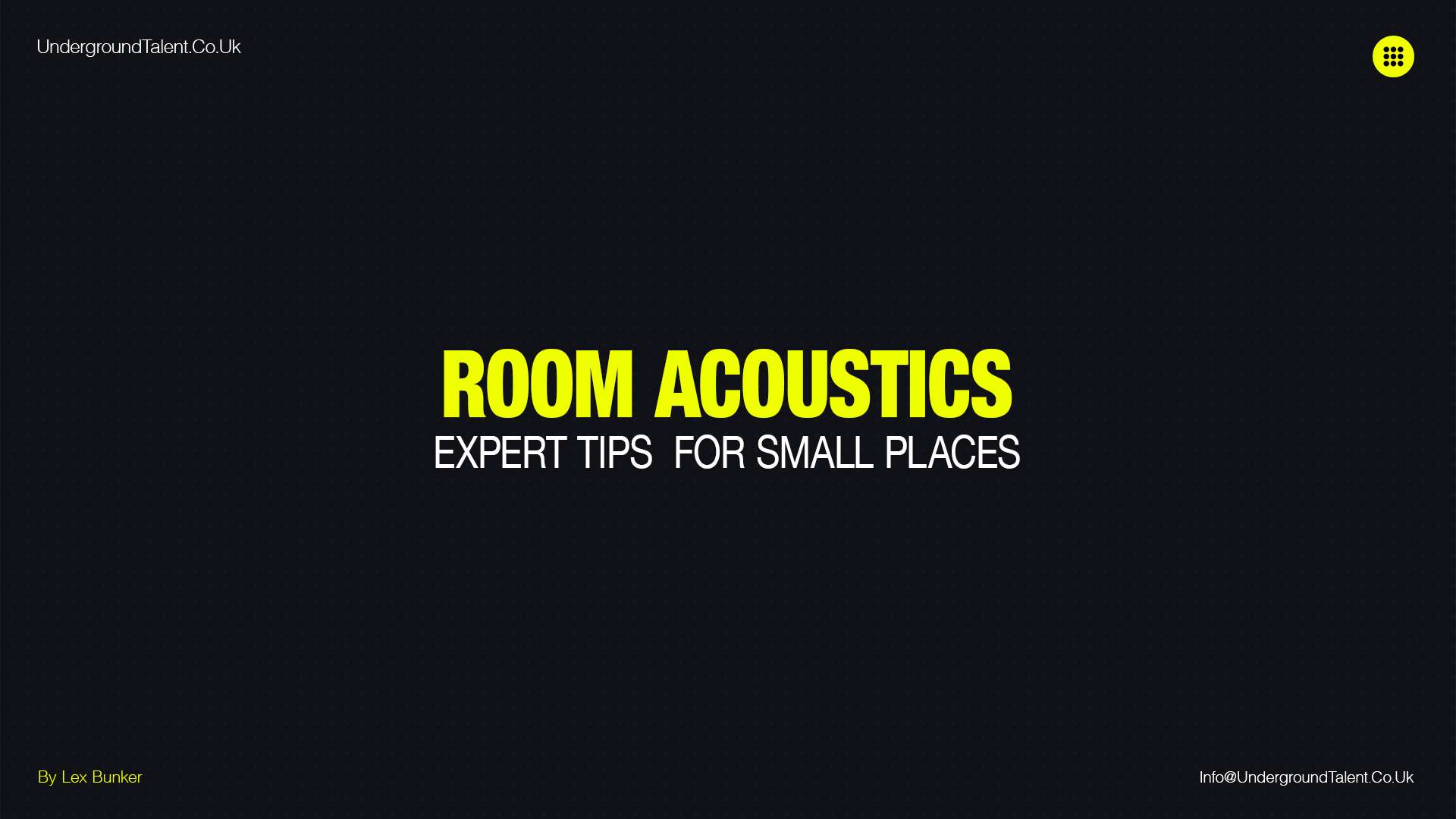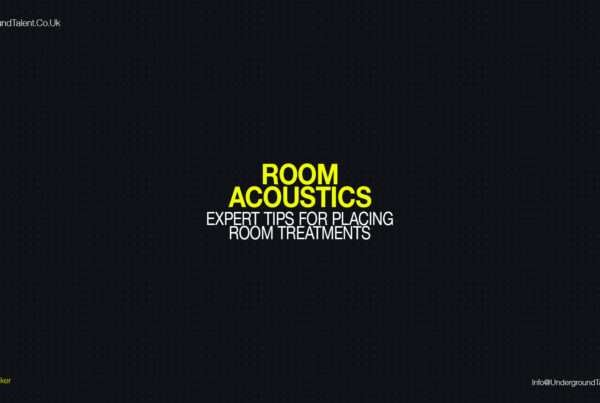Transform Your Small Room with These Acoustic Tips
Understanding Sound in Small Rooms
Small rooms present unique acoustic challenges. Sound waves reflect off walls, causing echoes and reverberations. This affects sound clarity and quality. In small spaces, sound behaves differently due to limited space for wave propagation. Understanding these basics helps in planning effective acoustic treatment.
To manage sound, focus on absorption, diffusion, and reflection. Absorption reduces echo by soaking up sound waves. Diffusion scatters sound evenly, preventing hotspots. Reflection can be managed by positioning speakers and furniture thoughtfully. Knowledge of these principles is crucial for creating an acoustically balanced environment.
For deeper insights, explore Understanding Sound Waves.
Setting Up Your Room for Optimal Sound
Setting up your room properly can drastically improve sound quality. Avoid perfect symmetry in your room to prevent standing waves. Standing waves distort sound, creating boomy or dead zones. Offset furniture and speakers to disrupt symmetry.
Place speakers at ear level and away from walls to minimize early reflections. Early reflections can muddy the sound, reducing clarity. Your listening position should be at least a third into the room from the back wall. This positioning avoids bass build-up and provides a balanced listening experience.
For a detailed guide, check How to Setup Your Room.
Essential Acoustic Treatments
Acoustic treatments are vital for managing sound in small rooms. Start with bass traps in the corners to absorb low-frequency sound waves. Low frequencies tend to build up in corners, causing boomy bass.
Acoustic panels should be placed on walls to absorb mid to high frequencies. These panels are particularly effective at first reflection points. Use the mirror method to identify these points. Diffusers are useful for scattering sound waves, reducing flutter echoes, and creating a more natural sound.
For comprehensive advice, consider reading Why You Need Room Treatment.
Choosing the Right Materials
Choosing the right materials for acoustic treatment is crucial for achieving the best sound quality. Here’s a detailed look at some effective materials and their applications:
| Material | Description | Application | Benefits |
|---|---|---|---|
| Foam Panels | Soft, porous panels that absorb sound waves | Walls, ceilings | Reduces mid to high-frequency reflections |
| Bass Traps | Thick, dense materials placed in corners | Room corners | Absorbs low-frequency sound waves |
| Carpets & Rugs | Soft flooring materials that absorb sound | Floors | Reduces sound reflections and adds warmth |
| Heavy Curtains | Thick curtains that block and absorb sound | Windows, walls | Manages reflections and adds sound absorption |
| Acoustic Panels | Rigid panels with absorptive properties | Walls, especially first reflection points | Absorbs mid to high frequencies, reduces echo |
| Diffusers | Textured surfaces that scatter sound waves | Back walls, ceilings | Reduces flutter echoes, creates even sound |
| Dense Drywall | Heavy, solid wall material | Walls, partitions | Adds mass for soundproofing, isolates noise |
Foam Panels
Foam panels are effective for absorbing mid to high frequencies. They are usually made from soft, porous materials that soak up sound waves. These panels are best placed on walls and ceilings, where they can reduce unwanted reflections and echoes. Foam panels come in various shapes and sizes, allowing for customizable coverage that fits the specific needs of your room.
Bass Traps
Bass traps are essential for managing low-frequency sound waves. These dense materials are typically placed in the corners of a room, where bass tends to build up. By absorbing these low frequencies, bass traps prevent boomy bass sounds and help create a more balanced audio environment. They are an indispensable tool for anyone serious about achieving high-quality sound in a small space.
Carpets and Rugs
Carpets and rugs are a simple yet effective solution for reducing sound reflections. Placing them on the floor adds warmth to the room and helps absorb sound waves, minimizing echoes. They are particularly useful in rooms with hard flooring, where sound can easily bounce around. Carpets and rugs not only improve acoustics but also enhance the room’s aesthetic appeal.
Heavy Curtains
Heavy curtains can significantly improve room acoustics by managing reflections and adding an extra layer of sound absorption. They are especially useful for rooms with windows, which can reflect sound and create unwanted echoes. Thick curtains block and absorb sound, preventing it from bouncing back into the room. This results in a clearer, more controlled audio environment.
Acoustic Panels
Acoustic panels are rigid panels with high absorptive properties, ideal for controlling mid to high frequencies. They are particularly effective when placed at first reflection points, where sound initially bounces off walls. The mirror method can help identify these points. Acoustic panels help reduce echoes and create a more balanced sound by absorbing unwanted reflections.
Diffusers
Diffusers are textured surfaces that scatter sound waves, reducing flutter echoes and creating a more even sound distribution. They are best placed on back walls or ceilings. Unlike absorptive materials, diffusers maintain the room’s natural liveliness by dispersing sound waves rather than soaking them up. This results in a more natural and pleasant audio experience.
Dense Drywall
Dense drywall adds mass to walls, providing effective soundproofing. It helps isolate the room by preventing external noise from entering and internal noise from escaping. Dense drywall is ideal for anyone looking to create a controlled and quiet environment. It is particularly useful for rooms that require high levels of sound isolation, such as recording studios or home theatres.
Leveraging Technology and Tools
Use technology and tools to fine-tune your room’s acoustics. Acoustic measurement tools help identify issues and assess the effectiveness of treatments. These tools provide real-time feedback, allowing for precise adjustments.
Acoustic Measurement Tools
- Room EQ Wizard: A powerful software for acoustic measurement and analysis. It helps measure room acoustics, frequency response, and pinpoint problem areas. You can download it here.
- SPL Meters: Devices that measure sound pressure levels in your room, providing data on how sound behaves in your space. Apps like dB Meter (available on iOS) or Sound Meter (available on Android) can be useful.
Soundproofing Solutions
For soundproofing, adding mass to walls, like dense drywall, can be effective. This isolates the room, preventing external noise from entering and internal noise from escaping. Investing in quality soundproofing materials, such as:
- Acoustic Caulk: Seals gaps and cracks to prevent sound leakage.
- Mass-Loaded Vinyl (MLV): Adds mass to walls for effective soundproofing.
Recommended Microphones for Room Testing
- Dayton Audio EMM-6: A highly accurate measurement microphone, perfect for room analysis. It provides a flat frequency response and is widely used with Room EQ Wizard.
- Behringer ECM8000: Known for its precision and affordability, this microphone is ideal for capturing room acoustics.
- miniDSP UMIK-1: A USB measurement microphone that is simple to use and comes with a calibration file, making it a great choice for beginners and professionals alike.
Avoiding Common Acoustic Mistakes
Avoid common mistakes to achieve the best acoustic results. Over-dampening a room can make it sound lifeless.
Balance absorption with diffusion to maintain a lively sound. Ignoring low frequencies is another common error. Use bass traps and strategic placement to control them effectively. Low frequencies are harder to manage but crucial for a balanced sound.
Regularly assess and adjust your room’s acoustics to adapt to changes in room usage or furniture. A proactive approach ensures your room remains acoustically optimized.
Ongoing Assessment and Adjustment
Regularly reassess your room’s acoustics to maintain optimal sound quality. Changes in furniture, usage, or even the seasons can affect acoustics. Use acoustic measurement tools periodically to check for issues. Make adjustments as needed to ensure consistent sound quality. This ongoing process is essential for maintaining an acoustically balanced environment.
For more insights and tips, explore related resources like Best Speaker Isolation Pads and Myths About Room Acoustics Explained.
Final Thoughts
Transforming your small room with these acoustic tips will significantly improve your audio experience.
Proper acoustic treatment makes a noticeable difference, whether you’re listening to music, recording audio, or simply enjoying conversations. By understanding sound behaviour, setting up your room correctly, and using the right materials and technology, you can achieve excellent acoustics.
Remember to avoid common mistakes and reassess your room’s acoustics regularly. Start implementing these tips today and enjoy a superior sound experience in your small space.
FAQ: Room Acoustics for Small Spaces
What is the best way to identify acoustic problems in my room?
Using acoustic measurement tools like Room EQ Wizard and SPL meters can help you identify issues such as standing waves, echoes, and frequency imbalances. These tools provide precise data, allowing you to make informed adjustments.
How do I choose the right acoustic panels for my room?
Select panels based on the frequencies you need to control. For mid to high frequencies, foam or fabric-wrapped panels are effective. For low frequencies, bass traps are essential. Placement is also crucial; panels should be installed at reflection points and corners.
Can furniture affect room acoustics?
Yes, furniture can significantly impact acoustics. Soft furnishings like sofas, chairs, and rugs absorb sound and reduce reflections, while hard surfaces can cause echoes. Arranging furniture to break up symmetry can also help improve sound distribution.
How important is the placement of speakers in a small room?
Proper speaker placement is vital. Speakers should be at ear level and positioned away from walls to reduce early reflections. Your listening position should be at least a third into the room from the back wall to avoid bass build-up and ensure balanced sound.
What are the benefits of using diffusers in a small room?
Diffusers scatter sound waves evenly, reducing flutter echoes and creating a more natural and balanced sound environment. They are particularly effective on back walls and ceilings where sound tends to reflect directly.
Is soundproofing necessary for improving room acoustics?
Soundproofing helps isolate your room from external noise and prevents internal noise from leaking out. This can be crucial in noisy environments or for critical listening and recording. Materials like dense drywall, acoustic caulk, and mass-loaded vinyl are effective for soundproofing.
How often should I reassess my room’s acoustics?
Regular assessment is recommended, especially if you change the room’s layout or add new furniture. Acoustic measurement tools can help you monitor and adjust your setup to maintain optimal sound quality.
Can I use DIY solutions for acoustic treatment?
While DIY solutions like blankets and bookshelves can provide some benefits, they often lack the precision and effectiveness of professional acoustic treatments. Investing in quality materials and tools ensures better results and long-term performance.
What is the mirror method for identifying reflection points?
The mirror method involves using a mirror to identify where sound first reflects off the walls. By placing a mirror on the wall and moving it until you can see the speaker’s reflection from your listening position, you can pinpoint where to place acoustic panels.
Do I need to treat both walls and ceilings for good acoustics?
Yes, treating both walls and ceilings helps manage reflections from all angles, leading to a more balanced and controlled sound environment. Ceiling panels can be particularly effective in reducing vertical reflections that can muddy the sound.
Additional Resources
- Mixing Electronic Music: Fundamentals and Objectives
Electronic Music Promotion – Unlock Massive Growth with Hypeddit
Producing Techno? Get Your Free Sample Packs.
Dive into electronic music production with our newly released “Free Techno Tools V1” and “Free Techno Tools V2” sample packs. These packs are full of high-quality sounds that will add a professional touch to your tracks. If you’re looking to expand your sound library, these free sample packs are perfect for every techno fanatic. Click on the links below to access these fantastic resources and elevate your production game today!
Connect With Us.
Join our vibrant community for more wisdom and updates:
And Always Remember…
Have Fun & Be Creative!





